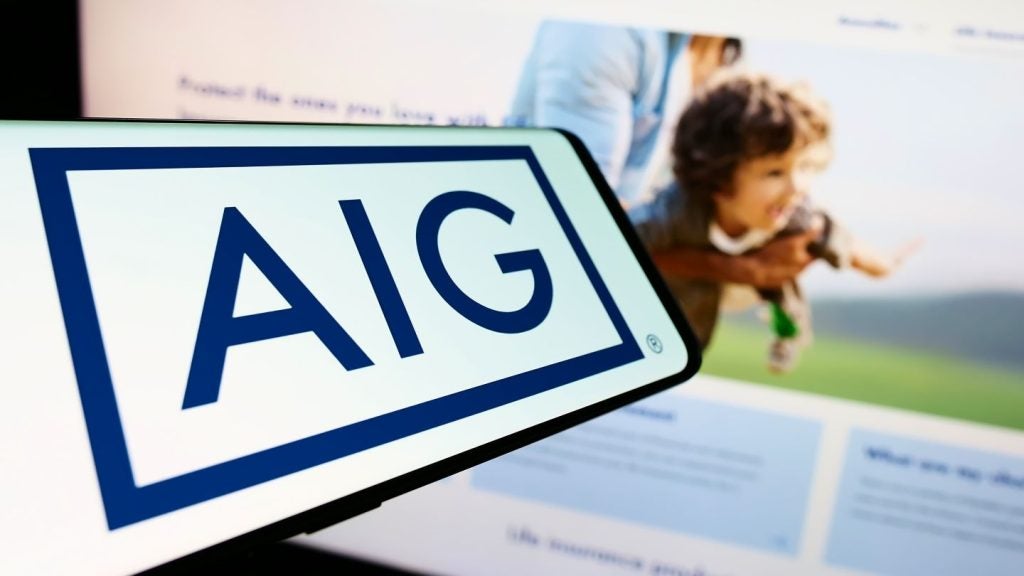Industry Attractiveness
The UK insurance industry is the largest insurance industry in Europe and the third largest in the world, in gross written premium terms, behind the US and Japan. The industry accounted for 7% of the global premiums in 2011, as compared to Japan’s 14% and 26% for the US. The industry’s penetration rate stood at 12.1% in 2012, which is one of the highest in the world. The industry is also an important contributor to the country’s economy and total tax income, and employed 290,000 people in the UK alone in 2012.
With life insurance accounting for 70.4% of the industry’s written premiums in 2012, the industry is dependent on long-term premiums. However, demand for long-term premium products fell in the period immediately following the financial crisis of 2011. In 2012, the non-life segment accounted for 26.3% of written premiums, while the personal accident and health segment accounted for 3.3%.
The financial crisis and subsequent European debt crisis adversely affected consumer confidence, resulting in a decline in both the demand for long-term insurance products and written premiums. The industry was valued at GBP186.6 billion (US$295.8 billion) in 2012, after recording a CAGR of -2.1%. This overall decline was predominantly caused by the poor performance of the industry during the financial crisis, with industry value declining by 19.1% in 2008 and 7.7% in 2009. The industry recovered slightly in 2011, posting a marginal growth of 0.7%.
Insurance related fraud and crimes registered an annual increase of 29.7% in 2011, demonstrating the need for stricter anti-fraud regulations. Insurers detected GBP3.02 billion in fraudulent claims in 2012, having increased at a CAGR of 12.3%, and this is forecast to increase to GBP4.4 billion by 2017. Association of British Insurers (ABI) estimates indicates that around GBP2.0 billion of fraud goes undetected in the UK each year. The Insurance Fraud Enforcement Division (IFED) was introduced in January 2012 to tackle this escalating problem. The industry also faced challenges in terms of poor investment returns, the insolvency of Highlands Insurance Company (UK) Limited and increasing claims.
The life segment declined at a CAGR of -3.9% as a result of adverse financial conditions and diminishing consumer confidence, with regards to long-term saving products, which constitute an important component of the segment. The non-life segment, which makes up 26.3% of overall insurance written premiums, recorded a CAGR of 3.6% between 2008 and 2012. This growth was driven mainly by increases in motor and causality insurance products.
The personal accident and health segment accounted for the smallest market share of 3.3% in 2012. This was due to the UK having a well-developed National Health Service (NHS) and private health insurance is therefore only adopted by a small proportion of the population in addition to the publicly-funded healthcare provided by the NHS. The private health insurance category therefore remained almost stagnant between 2008 and 2012. The value of the personal accident and health segment increased marginally from GBP6.15 billion (US$11.4 billion) in 2008 to GBP6.19 billion (US$9.8 billion) in 2012, at a CAGR of 0.2%.
The life segment is expected to grow at a CAGR of 1.5% to reach a value of GBP141.2 billion (US$223.8 billion) by 2017, while the non-life segment is projected to reach GBP57.2 billion (US$90.7 billion), after growing at a CAGR of 3.1%. The personal accident and health segment is expected to record a CAGR of 2.4% to reach a projected value of GBP7 billion (US$11 billion) in 2017. Growth in all segments is expected to be driven by the economic improvements, an aging population, the expanding automobile sector, stability in the property market and an increasing reliance on private health insurance due to the inadequacy of government health insurance schemes.

Access deeper industry intelligence
Experience unmatched clarity with a single platform that combines unique data, AI, and human expertise.
Segment Outlook
The UK life insurance segment is predominantly driven by the disciplined investment of individuals in long-term insurance policies. The segment is largest in the insurance industry and generated the highest premium in 2007. However, it has contracted since 2008 as a result of the financial crisis, eurozone crisis and slow economic recovery. The financial crisis of 2008-2009 adversely affected the sale of life insurance products, particularly unit-linked single premiums, causing a decline in overall premiums. Life insurance penetration also declined from 10.7% in 2008 to 8.5% in 2012. Overall, the life segment recorded a CAGR of -3.9% in that period as it slowly recovered from the financial crisis.
Limited demand for life insurance between 2008 and 2012 resulted in a marginal growth in gross written premium. This modest growth is expected to continue, with the segment expected to increase from GBP131.3 billion (US$208.2 billion) in 2012 to GBP141.2 billion (US$223.8 billion) in 2017, at a CAGR of 1.5%. The implementation of the EU’s Solvency II directive and the RDR are expected to pose significant challenges to the business models of insurers, hindering growth in the segment.
The split of the FSA into two different entities, the FCA and PRA, in April 2013 is expected to have an impact on the regulations governing life insurers operating in the country. Regulatory reporting requirements are therefore expected to increase, and insurers are required to improve their auditability, generate synchronized accounting information, and improve transparency. Multinational insurance companies are also focusing on controlling systemic liability risk and increasing transparency to comply with various regulations such as the Gramm-Leach-Bliley Act, the Test-Achats ruling, Sarbanes-Oxley, and Solvency II.
The segment is highly concentrated with the 10 leading insurers collectively accounting for 80.2% of premiums in 2011. The remaining 19.8% were divided among other 300 insurers authorized to offer life insurance and pension products. Aviva Life Plc was the largest company with a share of 13.7%, followed by Standard Life Plc with 13.0%.
The aging population is expected to drive growth in the segment. The aged 60 years and over population rose at a CAGR of 2.1%, while the overall population rose by 0.6% between 2008 and 2012.
Government initiatives, the launch of revised annuity products, a compulsory code of conduct to best possible retirement income to all individuals, and a business strategy delivering products according to consumer demand, by addressing factors such as changing lifestyle, are also expected to drive growth in the segment.
Distribution Channels

US Tariffs are shifting - will you react or anticipate?
Don’t let policy changes catch you off guard. Stay proactive with real-time data and expert analysis.
By GlobalDataThe distribution network of life insurance products in the UK is predominantly made up of agencies, bancassurance, direct marketing, e-commerce and insurance brokers. Brokers was the leading channel in the segment in 2012, followed by bancassurance and agencies. All channels, other than direct marketing and e-commerce, registered declines in new business written premium. Direct marketing, which constituted 6.2% of the total new business premium in 2012, registered growth of 27.3% between 2008 and 2012. E-commerce, the smallest distribution channel in terms of new business written premium, recorded a CAGR of 14.1% in the same period.
Brokers was the largest distribution channel for distributing life insurance products in 2012. This channel generated 66.2% of the gross written premiums for new business in 2008, followed by bancassurance with 15.3%. The brokers’ market share remained at 66.2% in 2012, whereas bancassurance’s share declined to 13.1% in 2012, from a share of 15.3% in 2008. The popularity and acceptance of brokers is expected to increase the channel’s share to 70.6% by 2017.
Life insurance business generated through brokers falls under the remit of PRA and FCA regulations. According to these regulations, brokers must register with the Financial Services Compensation Scheme (FSCS) and Financial Ombudsman Service (FOS). This ensures that losses arising from insolvency or misfeasance will be compensated. Under the regulations, professional indemnity is mandatory, ensuring that every broker should deal with four or more insurance companies and should not derive more than 35% of its commission from one insurer.
Bancassurance recorded a decline in new business written premium between 2008 and 2012 and this trend is expected to continue. The channel declined at a CAGR of 8.5% to value GBP8.0 billion (US$12.7 billion) in terms of new business gross written premium in 2012. The channel is expected to fall at a CAGR of 2.7% and its market share is expected to decline to 11.3% in 2017.
The agencies channel was the third-largest distribution channel in the life segment in 2012 with a market share of 11.7%. In terms of new business gross written premium, the channel decreased from GBP11.3 billion (US$21.0 billion) in 2008 to GBP7.1 billion (US$11.3 billion) in 2012. Te channel is expected to continue its declining trend with a CAGR of -6.5%, despite the return in consumer confidence for life insurance products. The market share is expected to decline from 11.7% in 2012 to 8.3% in 2017 due to the increasing popularity of brokers, direct marketing and e-commerce.
Recent Developments
CHESNARA TO BUY UK LIFE INSURANCE ARM FROM DIRECT LINE GROUP
09 October, 2013
Chesnara has entered into an agreement to acquire the entire issued share capital of Direct Line Life Insurance Company from Direct Line Insurance Group for £39.3m.
Direct Line Life is a UK-based life insurance company and wholly-owned subsidiary of Direct Line Group. It became substantially closed to new business on 5 July 2011 and has been focusing on managing the existing portfolio in line with the run-off plan agreed at the time with the then FSA.
Prior to closure to new business, Direct Line Life predominantly offered non-linked products including mortgage life cover, fixed term life cover and over 50’s life cover to UK customers distributed under both its own brand and also in recent years, but before the closure to new business, on a white label basis.
Direct Line Life is being acquired at an effective 74.7% of Chesnara directors’ estimate of the residual embedded value of £52.6 million as at 30 June 2013, adjusted to reflect a capital extraction of £23.0 million by the seller immediately at completion.
Chesnara said that the acquisition is subject to approval from the Prudential Regulation Authority (PRA).
Commenting on the acquisition, Chesnara CEO, Graham Kettleborough, said: "We are very pleased to have reached agreement to acquire a complementary UK business which we can integrate with our existing UK life book.
"Adding this portfolio to our existing book of business brings extra security, from increased size and concentrated governance, to both existing and the newly acquired policyholders," Kettleborough added.
AVIVA NAMES NEW CEO OF UK & IRELAND GENERAL INSURANCE
25 September, 2013
British multinational insurer Aviva has appointed Maurice Tulloch as the new CEO of UK & Ireland General Insurance, pending regulatory approval.
Maurice, who joined Aviva in 1992, will replace current CEO Robin Spencer, who is scheduled to leave the company by the end of this month.
As the new CEO of UK & Ireland General Insurance, Maurice will work closely with David Barral, the CEO of Aviva UK Life business, to fortify Aviva’s position as the leading insurer in the country.
Prior to accepting the current position, he was working as the CEO of Aviva Canada since 2009.
Under his leadership, the Canadian operation operating profits increased by 63% and he was involved in driving the company’s strategic direction and business operation in the country.
Present Aviva Canada broker distribution executive vice president Greg Somerville will oversee the Canadian business while the selection of Maurice’s replacement proceeds.







